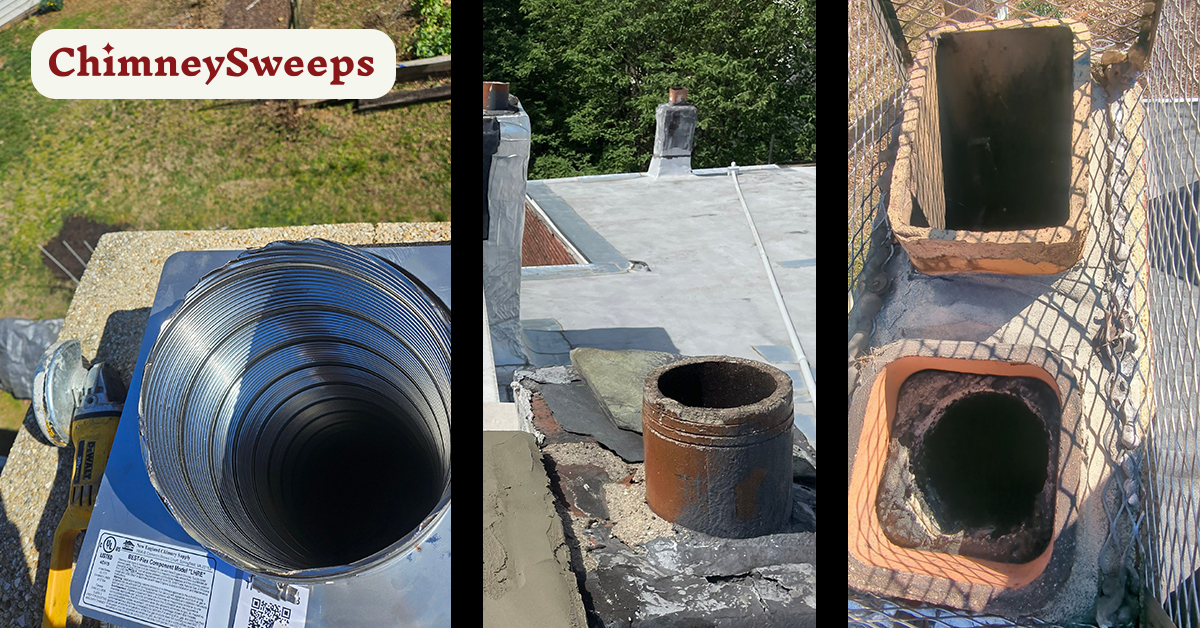Types of Chimney Liner
One of a chimney’s most crucial safety elements is undoubtedly the chimney liner. For smoke to securely and effectively depart your home, chimney liners provide a direct, unobstructed way. If there is not one, smoke may pass through any openings in the chimney walls, which will gradually decay. There is an increased risk of a chimney fire when smoke cannot be discharged from your chimney into the outside. Chimney liners are only one of the several parts that make up a secure and effective chimney.
A few people are concerned about chimney liners and require some basic information about them. One can see why they are needed for simplicity given the range of chimney liners available, as well as their strengths and weaknesses and usages. In this brief review of chimney liners, we’ll try to provide a few answers.
What is a Chimney liner?
A chimney liner is a long, flexible pipe Installed inside a fireplace with a clay flue tile. Starting from the firebox and continuing upward into the chimney crown, the liner is set up across the whole length of the clay flue tile. Its flexibility allows it to fit around imbalances and curves in chimneys.
What are the different types of chimney liners?
Let’s discuss the different types of chimney liners and help you determine which one is best for your needs.
Ceramic chimney liners
Your wood-burning stove or fireplace will work safer and more economically if you use ceramic chimney liners. These liners are meant to protect your chimney’s walls inside from the intense heat generated during combustion. Ceramic liners help lower the risk of chimney fires by functioning as a strong barrier between the flames and the flue build, preventing heat transmission to combustible elements. Furthermore, ceramic chimney liners improve airflow and draft, improving the efficiency of burning fuel in your stove or fireplace and maximising its performance.
Ceramic chimney liners not only offer safety but also extend the life of your chimney system. These liners help avoid the slow degradation of the chimney walls by reducing the harmful effects of combustion byproducts like creosote. By doing this, you may prolong the life of your chimney and reduce the need for expensive maintenance and repairs. Ceramic chimney liners provide homeowners with peace of mind, knowing that their chimney or fireplace operates safely and effectively, due to their strong design and proven performance.
Clay Liners
When constructing a chimney, clay tile liners which are also known as clay flue liners are used to contain and discharge combustion products, such as smoke and gases, into the air around it. Because of their remarkable heat resistance, they are made of an unusual kind of clay known as fire clay or refractory clay. The inner layer of the chimney is made up of several layers of clay flue liners, which can be round or rectangular. The normal thickness of its walls is one to two inches. Similar to how bricks or ceramics are manufactured, they are created by baking moulded clay at high temperatures until it stiffens.
Clay tile liners are mainly utilised to protect the home’s residents from the heat and hazardous gases generated during a fire. They are resistant to extremely high temperatures and prevent the house from being structurally damaged by the fire’s extent. Additionally, they stop the toxic chemical carbon monoxide from seeping into the home.
Cast-in-place liners
For chimney lining, cast-in-place liners are a chosen option due to their durability and flexibility. The process of making these liners involves directly pouring a particular mixture into the chimney, where it hardens into a seamless, precisely fitting lining that adheres to the lines of the flue. To create a solid, heat-resistant barrier, the mixture typically consists of cement, stones, and strengthening fibres. The mixture is then poured and let to cure.
The ability of cast-in-place liners to transform old chimneys with a minimal amount of damage is one of their key benefits. The chimney structure does not require to be entirely removed or rebuilt because the liner is cast in place. Because of this, cast-in-place liners are a reasonable choice for relining fireplaces, particularly when the original chimney has deteriorated or damaged. Also, the seamless, smooth surface of cast-in-place liners encourages enhanced ventilation and draft, enhancing the chimney system’s overall effectiveness. All things taken into account, cast-in-place liners provide homeowners with an eternal, long-lasting option for chimney lining that enhances performance and safety.
Metal Liners
For both new and old chimneys, metal chimney liners often made from aluminium or stainless steel are an attractive choice. Metal liners are excellent choices for fireplace liners. Aluminium is an additional good alternative if stainless steel is too expensive for you. There are far more options than clay.
Stainless steel liners are among the most common types due to their ability to resist heat and corrosion. They are also compatible with any kind of fuel, such as oil, gas, and wood. Since they are incapable of withstanding the high temperatures generated by wood-burning or oil-burning appliances, aluminium liners tend to be less expensive but have restrictions to use with particular types of gas appliances. Both flexible and rigid metal chimney liners are provided. For straight chimneys, rigid liners perform well; flexible liners work well for offset or sloping chimneys. In older chimneys, where the liners are more flexible, the structure might not be as straight.
We Offer Skilled Services for Chimney Liner Replacement and Repair
We at Chimney Sweeps make it simple to select the ideal chimney liner for your house. We discuss your options for replacing your chimney flue and respond to any queries you might have. For example, you might desire further details on the significance of having an unbroken chimney liner. As chimney flues assist protect your home from hazardous carbon monoxide exposure and deadly house fires, one should keep it perfect. We are highly experienced and can help you with this by providing reasonable prices.
